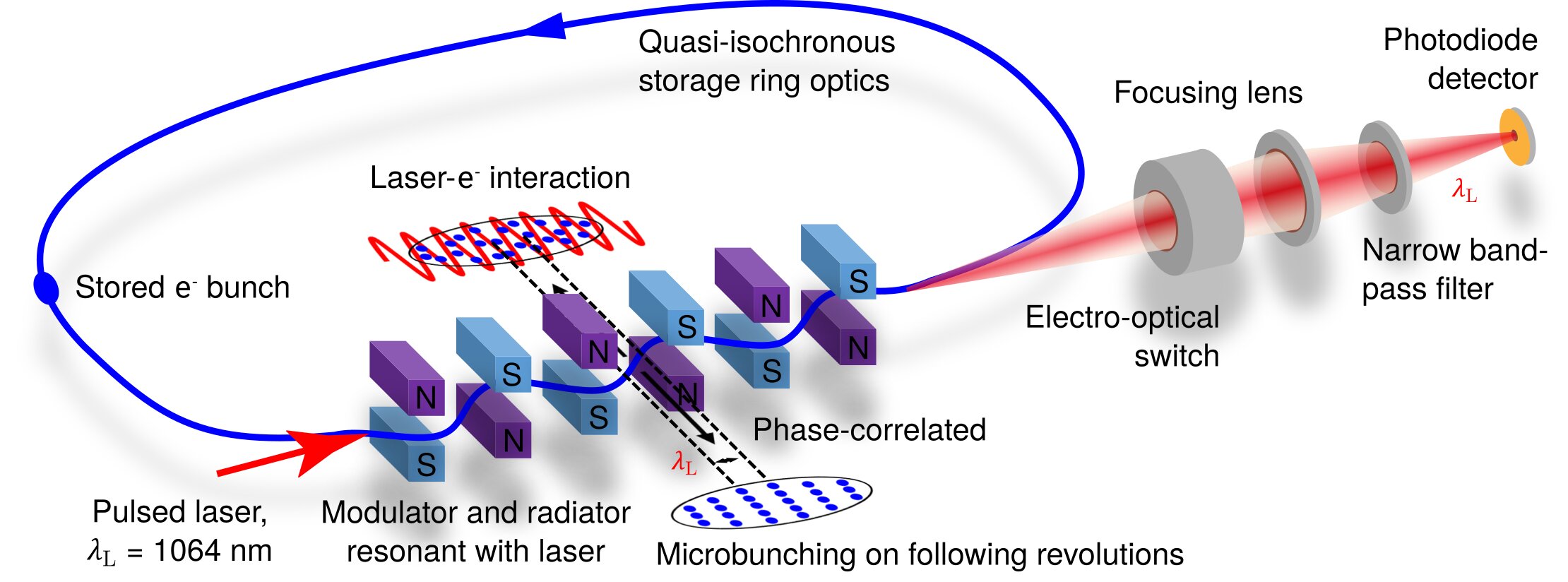A pulsed laser co-propagates with the electron beam through the MLS U125 undulator and imposes an energy modulation. The same undulator serves as a radiator in the subsequent passes of the electron beam. The undulator radiation is detected by a fast photodiode, while the laser pulse is blocked from the detection path using an electro-optical switch. Credit: HZB/ Communications Physics
When ultra-fast electrons are deflected, they emit light: synchrotron radiation. This is used in so-called storage rings in which magnets force the particles to follow a closed path. This light is longitudinally incoherent and consists of a broad spectrum of wavelengths.
The high gloss makes it an excellent tool for materials research. Monochromators can be used to extract individual wavelengths from the spectrum, but this reduces the radiation power by many orders of magnitude to values of only a few watts.
But what if a storage ring instead provided monochromatic, coherent light with multi-kilowatt outputs, analogous to a high-powered laser? Physicist Alexander Chao and his doctoral student Daniel Ratner found an answer to this challenge in 2010: if the electron beams spinning in a storage ring become shorter than the wavelength of the light they emit, the emitted radiation becomes coherent and therefore millions of times more powerful.
“You should know that the electrons in a storage ring are not homogeneously distributed,” explains Arnold Kruschinski, Ph.D. student at HZB and lead author of the article. “They move in bunches with a typical length of about a centimeter and a distance of about 60 centimeters. That’s six orders of magnitude more than the micro-bundles proposed by Chao.”
For the Steady-State Micro-Bunching (SSMB) project, Chinese theorist Xiujie Deng has defined a series of settings for a specific type of circular accelerator, the isochronous or “low-alpha” rings. After interaction with a laser, these create short particle beams just one micrometer long.
The research team from HZB, Tsinghua University and PTB has already shown in 2021 that this works in a proof-of-principle experiment. They used the Metrology Light Source (MLS) at Adlershof, the first storage ring ever designed for low-alpha operation. The team has now been able to fully verify Deng’s theory for generating microbeams in extensive experiments. “For us, this is an important step towards a new type of SSMB radiation source,” says Kruschinski.
HZB project manager Jörg Feikes is certain that it will take some time. He sees some parallels between the SSMB and the development of free-electron lasers.
“After initial experiments and decades of development work, this idea has grown into a kilometer-long, superconducting accelerator,” he says. “Such developments are very long-term. It starts with an idea, then a theory, and then there are experimentalists who gradually realize it and I think SSMB will develop in the same way.”
More information:
Arnold Kruschinski et al, Confirmation of the theoretical basis of steady-state microbunching, Communication physics (2024). DOI: 10.1038/s42005-024-01657-y
Provided by Helmholtz Association of German Research Centers
Quote: New method for generating monochromatic light in storage rings (2024, June 28) Retrieved June 29, 2024, from https://phys.org/news/2024-06-method-generating-monochromatic-storage.html
This document is subject to copyright. Except for fair dealing for private study or research, no part may be reproduced without written permission. The contents are supplied for information purposes only.
